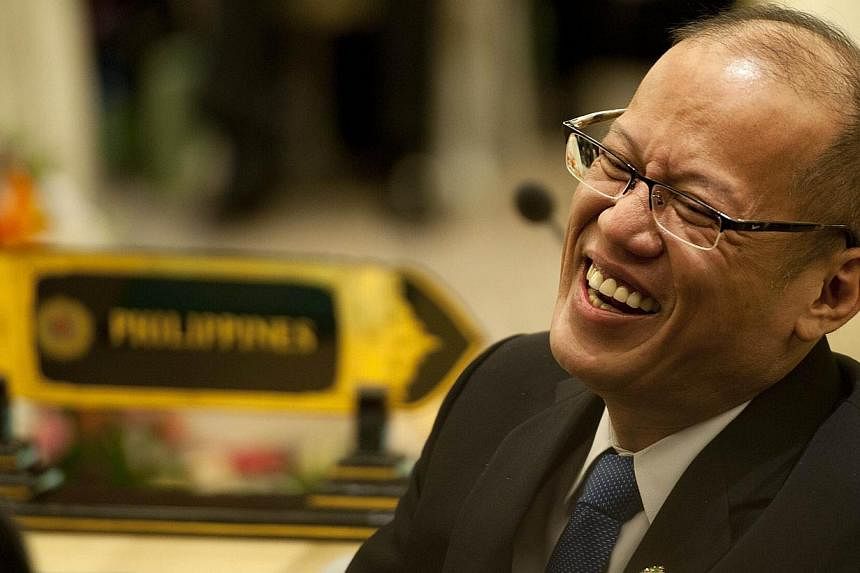The biggest economic policy question of the moment in South-east Asia is: What will the start of the Asean Economic Community next year actually mean for business?
Consulting firm EY recently released a major report, Trade Secrets On The Asean Economic Community And Inward Investment, to provide a partial answer.
Major changes to banking policy in the Philippines also provide another part of the answer, and are an aspect that has received surprisingly little coverage beyond the Philippines itself.
Over the past three months, the upcoming Asean Economic Community and its Financial Integration Framework have served as a catalyst for the further opening up and consolidation of the Philippine banking sector.
On July 15, President Benigno Aquino signed into law the Republic Act 10641, entitled An Act Allowing The Full Entry Of Foreign Banks In The Philippines.
Foreign banks can now purchase up to 100 per cent of an existing bank, set up a 100 per cent foreign-owned, locally incorporated banking subsidiary or establish foreign bank branches.
The longstanding principle that 60 per cent of banking system assets should be held by domestic banks which are majority-owned by Filipinos is maintained though, for political reasons.
Over the past five years, foreign banks' share of the Philippine banking sector's total operating income has not exceeded 15 per cent.
There is a lot of room for foreign bank expansion before this principle is tested. The Bangko Sentral ng Pilipinas and the legislators behind the new law, in response to local bankers' grumblings, repeatedly justified this sudden full opening up as the need for the Philippine banking sector to prepare for the upcoming Community and its Financial Integration Framework's call for a "semi-integrated financial market by 2020".
Indeed, on Oct 20, the central bank announced a sharp increase in the minimum capital requirements for the range of bank licences, with some smaller private local banks facing a sixfold increase to maintain their universal banking licences.
This is clearly aimed at encouraging greater consolidation, particularly among small private local banks and mergers between existing or new foreign banks and local ones.
Again, the Bangko Sentral justified this unpopular move by referring to the upcoming Community and the need for banks in the Philippines to compete with their larger regional peers.
Malaysia's Maybank already has the largest number of branches and automated teller machines among the 14 foreign banks currently operating in the Philippines.
The recent changes have also piqued greater interest in the Philippine market by another regionally ambitious Malaysian bank, CIMB.
The recent policy changes in the Philippines highlight three potential positive impacts of the upcoming Community for business and the region.
First, the services trade across South-east Asia is still much more fettered by protectionist politics and policies than that of manufactured goods.
Compared with the latter, services should be much more affected by how different national authorities across Asean respond to greater liberalisation of trade.
The Philippines' early-mover changes to banking policy suggest this is already in train.
Second, while the Asean Economic Community and its Financial Integration Framework commit Asean member states to greater trade liberalisation and economic integration among themselves, Philippine banking authorities have used this as reason to open up to all without preference.
This goes well beyond the requirements of the Asean Economic Community. Not only does it maximise the number of foreign banks that could benefit from these policy changes, it also maximises efficiency and consumer choice benefits that could be garnered from this unilateral liberalisation.
Banks from Taiwan, Japan and the United States responded more positively than South-east Asian ones to the limited opening up of the Philippine banking sector nearly 20 years ago in response to the Asian financial crisis.
Greater foreign bank competition, spurred by this opening up, lowered the interest rate spreads, operating expenses and profit margins among Philippine private banks and boosted their investment in Internet banking and consumer banking products. These patterns could well be replicated.
Finally, that it is the Philippines, South-east Asia's less-mentioned major market, which is responding so soon and comprehensively to the upcoming Community is important. The Philippines is widely seen as a market and political system in thrall to local oligarchic interests.
Yet, now, it has the most open banking system, in policy terms, in South-east Asia. Rather than being a laggard paralysed by vested interests, here, the Philippines is a regional liberalisation leader.
If the Philippine banking example is replicated by other Asean member states and across other services sectors, then the Asean Economic Community could well integrate South-east Asia's booming economies with one another and with the world economy as a whole.
Unilateral policy choices made by individual Asean states with reference to the Asean Economic Community to achieve domestic efficiency and competition goals, and not what Asean members negotiate among themselves under its framework, may be the most important part of what the Asean Economic Community will mean for business.
The Philippines' moves on banking policy lift the veil on the hidden harvest that the announcement of the Asean Economic Community and its 2015 starting date may bring to South-east Asia's business communities and societies.
The writer is a senior fellow at the Institute of Southeast Asian Studies.
S.E.A. View is a weekly column on South-east Asian affairs. Read more S.E.A View pieces online at straitstimes.com/news/opinion

